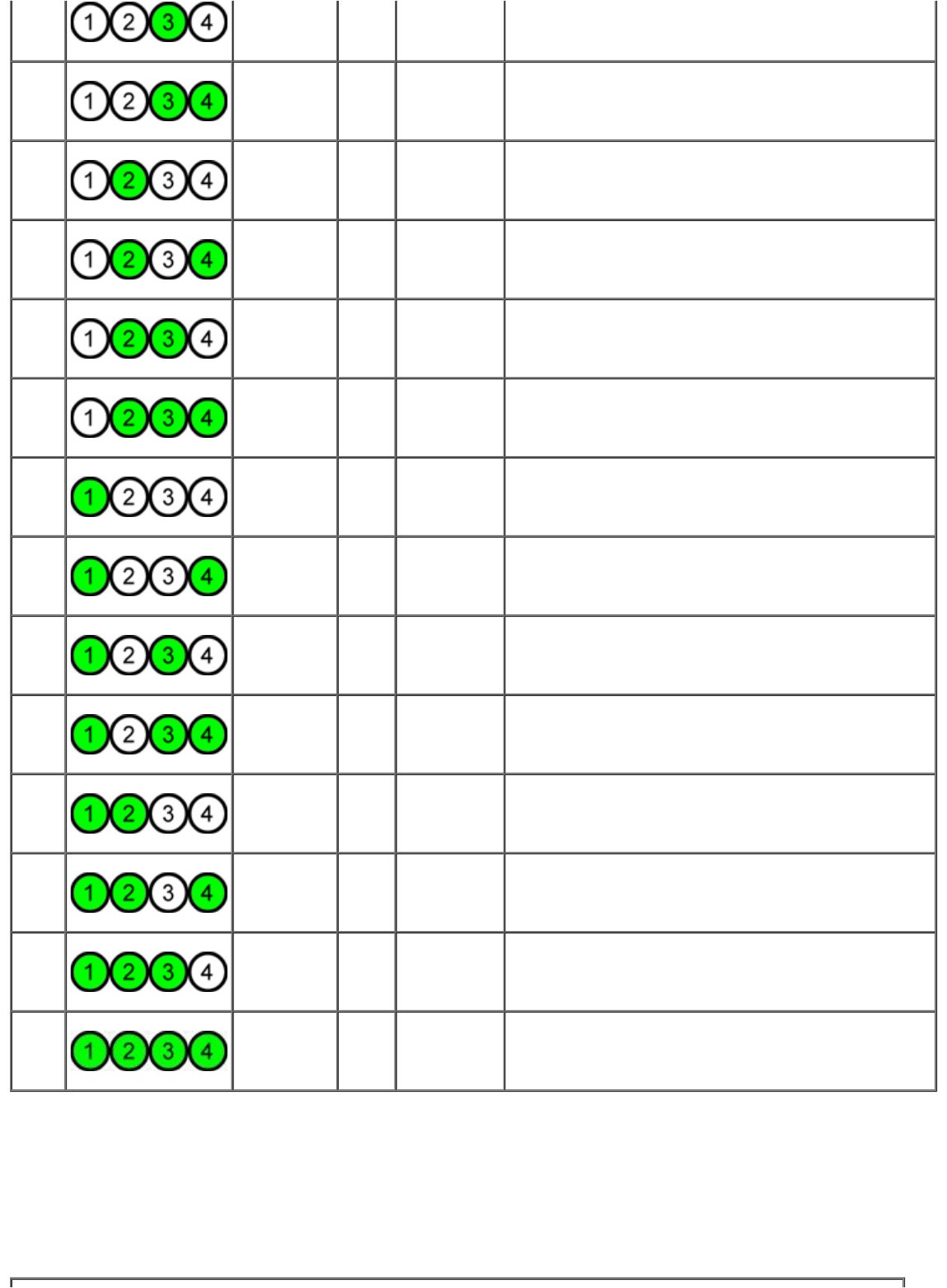
S2
3- Solid
4- Off
CPU CPU
failure was detected.
S3
1- Off
2- Off
3- Solid
4- Solid
MEM Memory
Memory subsystem configuration activity is in progress.
Appropriate memory modules were detected but a
memory failure has occurred.
S4
1- Off
2- Solid
3- Off
4- Off
PCI PCI device
PCI device configuration activity is in progress or PCI
device failure was detected.
S5
1- Off
2- Solid
3- Off
4- Solid
VID Video Card
Video subsystem configuration activity in progress or
video subsystem failure.
S6
1- Off
2- Solid
3- Solid
4- Off
STO Storage
Storage device configuration in progress or storage
subsystem failure.
S7
1- Off
2- Solid
3- Solid
4- Solid
USB USB
USB subsystem configuration activity in progress or
USB subsystem failure.
S8
1- Solid
2- Off
3- Off
4- Off
MEM Memory
Memory subsystem configuration activity is in progress.
No memory modules were detected.
S9
1- Solid
2- Off
3- Off
4- Solid
MBF
System
board
Fatal system board failure detected.
S10
1- Solid
2- Off
3- Solid
4- Off
MEM Memory
Memory subsystem configuration activity is in progress.
Memory modules have been detected but appear to be
incompatible or in an invalid configuration.
S11
1- Solid
2- Off
3- Solid
4- Solid
PRV
Other pre-
video
activity
Indicates routine system activity preceding video
initialization.
S12
1- Solid
2- Solid
3- Off
4- Off
CFG
Resource
configuration
System resource configuration in progress.
S13
1- Solid
2- Solid
3- Off
4- Solid
Reserved
Reserved for future use. This pattern is being
considered to indicate the Visual Off state on the
Dimension systems.
S14
1- Solid
2- Solid
3- Solid
4- Off
POV
Other post-
video
activity
Indicates routine system activity subsequent to video
initialization.
S15
1- Solid
2- Solid
3- Solid
4- Solid
STD
Boot hand
off
Indicates End of POST process. Lights are normally in
this state briefly as POST completes. Once the hand-off
to the OS is done, the lights turn off and transition to
S0e state.
Beep Codes
When errors occur during a boot routine that cannot be reported on the monitor, the computer may emit a beep code that
identifies the problem. The beep code is a pattern of sounds: for example, one beep followed by a second beep, then
followed by a burst of three beeps (code 1-1-3) means that the computer was unable to read the data in nonvolatile
random-access memory (NVRAM). If the system loses power and beeps constantly when you turn it back on, the BIOS is
probably corrupted.


















